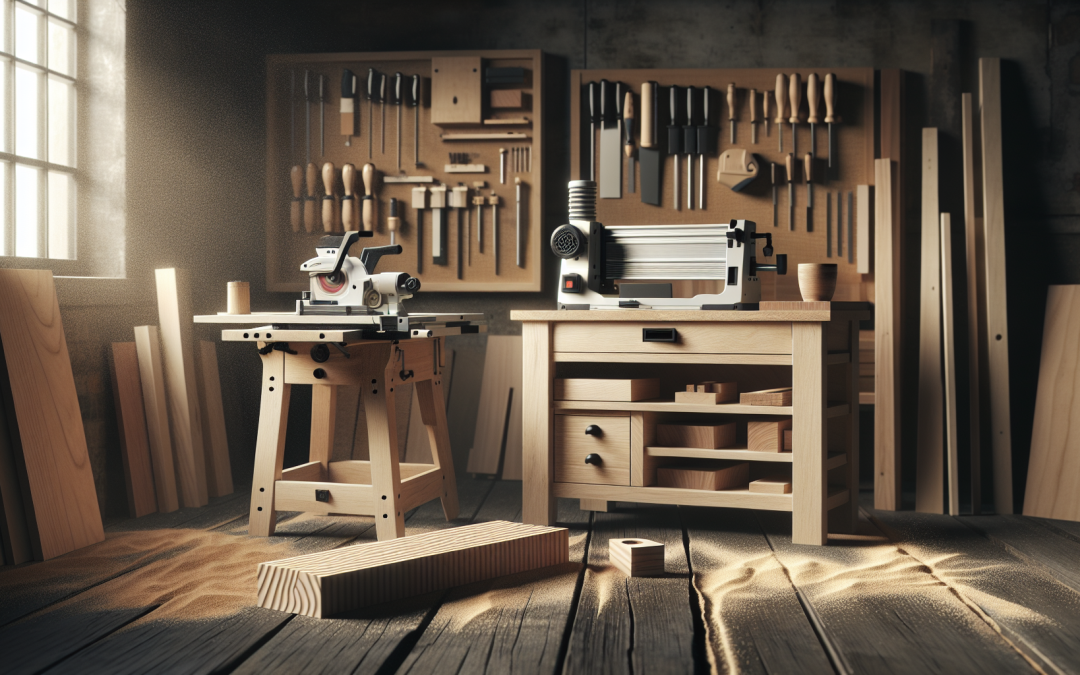Before we delve into the transformative potential of space-saving equipment, it’s imperative to understand the essence of woodworking, which fundamentally begins with the tools that one uses. Essential woodworking tools like saws, chisels and planes play a crucial role in bringing your woodworking dreams to life. Webster defines these foundational woodworking tools in this informative post.
Optimizing Your Workshop with Space-Saving Equipment
The magic of a workshop lies in the organization. Careful attention to the setup can convert even a small space into an efficient, productive environment by incorporating space-saving tools. These tools, when combined with a hint of creativity, can amplify the potential of even the most compact woodworking workshops.
Categorizing the equipment based on their sizes and frequency of use can save a tremendous amount of space. This step allows woodworkers to keep the tools they use often within reach, while those used less frequently can be stored away. Furthermore, implementing vertical storage components can capitalize on the height of your workshop, freeing more space on the ground.
One can also think about making multipurpose worktables that can be used as a chisel station, saw bench, or planer surface. An adjustable and durable work table can be a real game-changer in a small workshop.
Streamlining Workflow to Maximise Efficiency
Just as important as the physical space itself is the workflow within it. Budgeting space for movement and optimal tool positioning can directly influence efficiency. Tools should be positioned in a way that makes the most sense for your projects, creating a seamless flow of operations from one task to the next.
This is where the concept of mobile bases comes in handy. A guide on precision cuts points out the relevance of tool positioning. Mobile bases enable the movement of heavier equipment as needed to optimize space and improve workflow.
The Key to Space-Saving – Smart Machinery Choices
Choosing machinery that is adaptable and multifunctional can conserve a significant amount of space in your workshop. Machines that can perform a variety of tasks can potentially save space by replacing several single-purpose machines.
For example, a combination machine that integrates a table saw, drill press, and spindle sander into one device can replace three separate, bigger machines. Furthermore, opting for smaller, bench-top versions rather than standalone machines can conserve floor space without compromising the functionality needed for your projects.
Learning From Mistakes
Even the most experienced woodworkers sometimes make mistakes. From poor measurements to incorrect tool use, these errors can be a significant setback. Instead of letting these mishaps discourage you, consider them as opportunities to learn and make improvements.
In this valuable read, Webster discusses these common mistakes and offers practical advice on how to avoid them and build better habits moving forward.
Incorporating Contemporary Techniques
Finally, in addition to optimizing tool use and the physical space of a workshop, incorporating contemporary woodworking techniques can further improve efficiency.
In a guide on joinery techniques, the importance of classic methods and their uses in modern-day woodworking are discussed.
By embracing these traditional methods and blending them with innovative, space-saving equipment, woodworkers can unlock the hidden potential of their workshops. This symbiotic marriage between tradition and innovation paves the way for creativity, productivity, and maximum utilization of your woodworking workshop.

